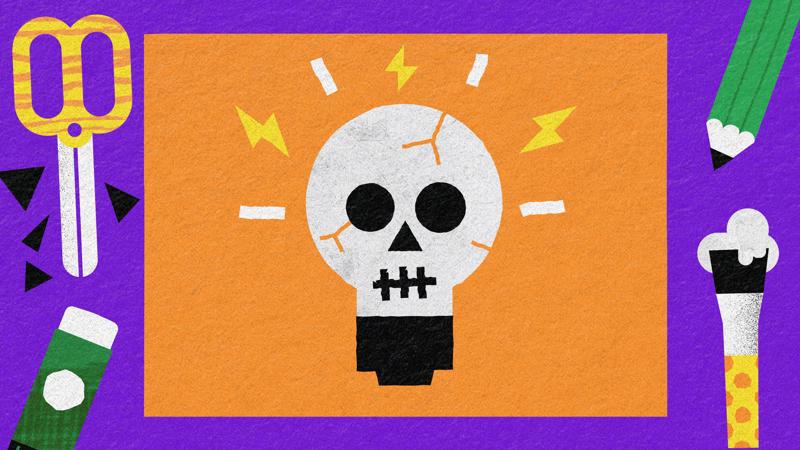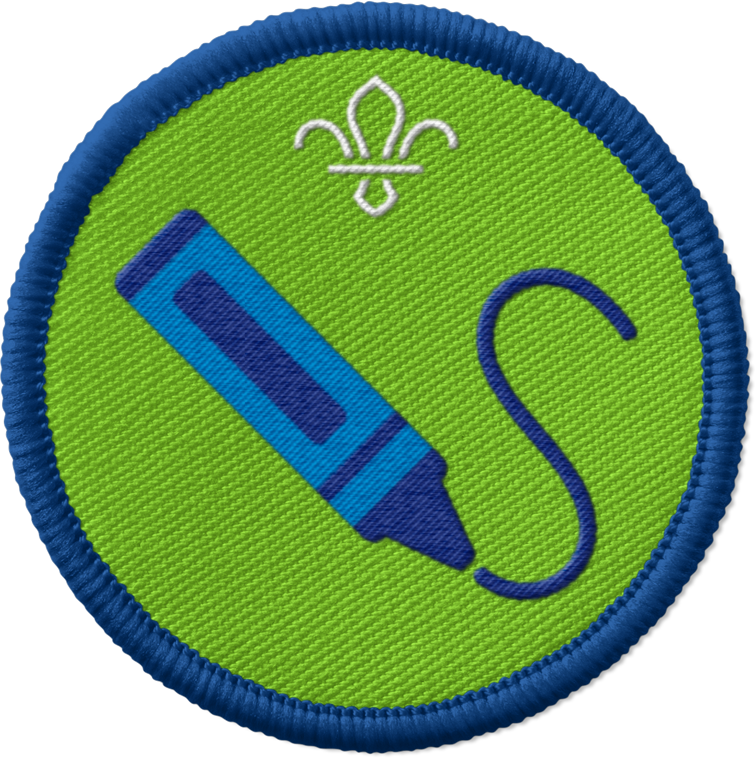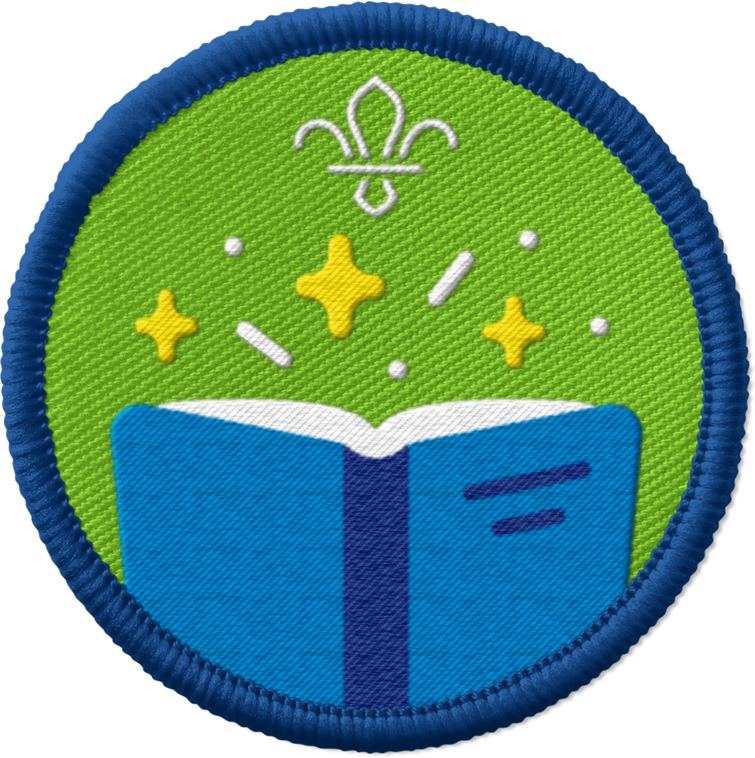
Make some spooky characters
You’ll need
- A4 paper
- Coloured pens or pencils
- Paint
- Paint brushes
- Natural materials (for example, leaves, twigs, feathers)
- Clay or modelling dough
- Toy blocks/bricks
- Any other craft or toy building materials
Before you begin
- Use the safety checklist to help you plan and risk assess your activity. Additional help to carry out your risk assessment, including examples can be found here. Don’t forget to make sure all young people and adults involved in the activity know how to take part safely.
- Make sure you’ll have enough adult helpers. You may need some parents and carers to help if you’re short on helpers.
Halloween’s celebrated on 31 October every year in many countries around the world.
The word ‘Halloween’ comes from ‘All Hallows’ Eve’.
In Christianity, this is the day before All Hallows’ Day, also known as All Saints’ Day, on the 1 November.
However, its traditions can be traced back to a festival called Samhain, pronounced Sow-in.
Samhain was first celebrated by the Celts of ancient Europe, around 2000 years ago, to mark the end of the harvest season and beginning of winter.
People believe that at this time of year that the barrier or veil between our physical world and the world of ghosts and spirits is at its thinnest.
It’s believed that this means the ghosts and spirits can move easily between the two realms and enter into our world, but there are practices and rituals to scare away the ghosts and spirits.
You can find out more about where some of today’s Halloween traditions may come from with CBBC’s Newsround Halloween traditions video.
Planning this activity
- Gather a range of arts and crafts, and toy building materials. It could be anything that’s safe and clean that people could use to create a character, so they can use their imaginations and creativity. You could include things like natural materials, wooden spoons, cardboard, fabric, string, buttons or recycled materials.
Invent your character
- Gather everyone together and ask if anyone knows what Halloween is.
- Explain that Halloween is celebrated every year on 31 October all around the world. It’s a fun festival of spooky magic and people like to dress up in fancy dress costumes of ghosts, ghouls and monsters, make pumpkin lanterns, go trick or treating and tell ghost stories.
- Explain that everyone is going to design their own Halloween character, either by themselves or in pairs. They might want to make a scary creature or monster. However, if they don’t want to create something scary, they could invent a character, such as a superhero, to protect everyone.
- Everyone can create their character, using whichever materials they like. They can either plan it first, or dive straight in. Depending on what materials are available, they could:
-
-
- use arts and crafts materials
- use toy bricks/blocks
- draw or paint
- write a description
- use natural materials, such as sticks or twigs, which could make a great skeleton
- use clay or modelling dough
- create a puppet using a wooden spoon
-
- Encourage everyone to think of some details about their character.
-
-
- What’s their character called?
- Where’s it from?
- Where does it live?
- Does it talk or make any sounds?
- How big is it?
- Does it eat or drink?
- Does it grow or change?
- What’s its story?
-
Characters come together
- Ask everyone to get into groups and show each other their creations.
- The group should take it in turns to tell each other a bit about their character. People could share what they like about the other characters.
- Now, ask the groups to come up with a story that includes each of their characters. They could draw it or write it down if they want to. This might help them remember it.
- Everyone can come back together and groups could share the story they came up with if they’re happy and comfortable to. No-one has to perform or share their story, if they don’t want to.
Reflection
This is a great activity to explore how we all have different imaginations, skills and ways of making things. It’s important to value how all our characters we’ve created celebrate diversity, uniqueness, flexibility and individuality.
Here are some questions to get people thinking:
- What materials did people choose to use, and why?
- There are lots of different ways to be creative. How did people find being able to choose?
- How did people go about making their character? Did they plan it first, or jump straight in?
- Did people work by themselves or with someone else? What were the positives and challenges of each way?
- What was your favourite character that someone else created? What did you like about it?
- What was it like bringing people’s characters together in a story? Do you think it made creating a story easier or more difficult? Did it have any advantages?
Safety
All activities must be safely managed. You must complete a thorough risk assessment and take appropriate steps to reduce risk. Use the safety checklist to help you plan and risk assess your activity. Always get approval for the activity, and have suitable supervision and an InTouch process.
- Glue and solvents
Always supervise young people appropriately when they’re using glue and solvent products. Make sure there’s plenty of ventilation. Be aware of any medical conditions that could be affected by glue or solvent use and make adjustments as needed.
- Scissors
Supervise young people appropriately when they’re using scissors. Store all sharp objects securely, out of the reach of young people.
- Craft: Unusual substances
Supervise young people appropriately when they’re using unusual substances, such as powdered paint, ash or dirt. Be aware of any medical conditions that could be affected by what’s being used. Make sure you follow all relevant safety guidance or manufacturers guidelines, where available. Make sure you dispose of it appropriately too, in line with safety guidance.
- If people struggle to come up with their own character, they could colour in, recreate or add details to a picture of an existing character.
- People could be given more time or less time to invent their characters and to create their stories together.
- For an extra challenge, people could work together to act out their story for the rest of the group.
- There are lots of different ways to be creative. People can choose what works best for them, or just what they most enjoy.
- People who struggle with making choices could find all the options a bit overwhelming, so they might need extra support or to work with a young leader/volunteer to be able to create their character.
- People can choose whether they’d like to pair up with someone else and share skills. Someone who’s great at drawing, but struggling to invent a character, could team up with someone who isn't keen on arts and crafts, but has a great character they want to bring to life.
- People could also work in pairs to make a character together if someone may struggle with cutting or sticking and a buddy could help them.
- Remember that some people or meeting places may not be comfortable with Halloween. You’ll know your group best, so will be able to decide whether Halloween activities are suitable for your group.
All Scout activities should be inclusive and accessible.
People could plan a performance of their story for their Entertainer badge.
People could create their character digitally and even animate it to work towards their Digital Maker badges.
Everyone can choose how they create their character and what materials they use. This activity gives everyone a chance to be creative in a way that works for them and to show their individuality or personality. Make sure everyone has an equal opportunity to share their creations with others, if they feel comfortable to.





